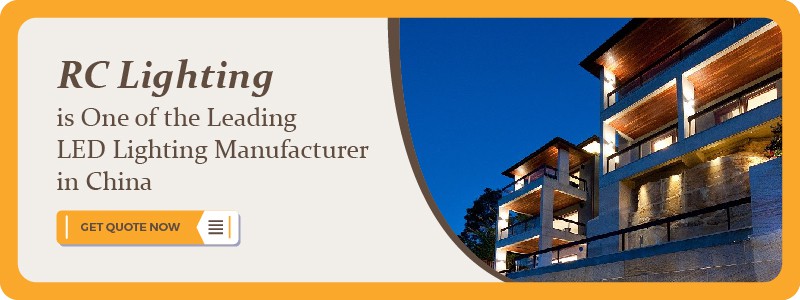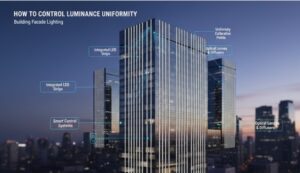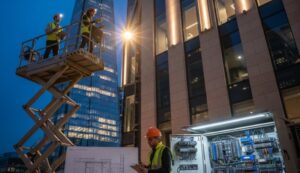Light plays a vital role in any environment. We can only walk and work when we see, and we can only see people, architecture, and objects because we have light. Invariably, light is essential in how we feel about our environment and react to a space.
When a facade lighting design is done wrong, not only does it stifle the expression of the characteristics of the building, it could permanently separate such a tower, no matter how independently beautiful it is, from its immediate environment.
Suppose your goal is to have a real estate property that would maintain its financial value and awe passers-by with its aesthetics. You might want to consider the 12 factors listed in this article before choosing a facade lighting design.
You may wonder why it is important to consider anything before going ahead with your preferred concept. The truth is no two buildings are the same in terms of their characteristics, location, or history. Thus, as mundane as lighting may appear, its concept or design on your facade must capture the unique meaning, history, or culture behind any monument.
Before I walk you through some of these 12 most important factors, I should tell you what facade lighting is, just in case you do not know, like Johnny.
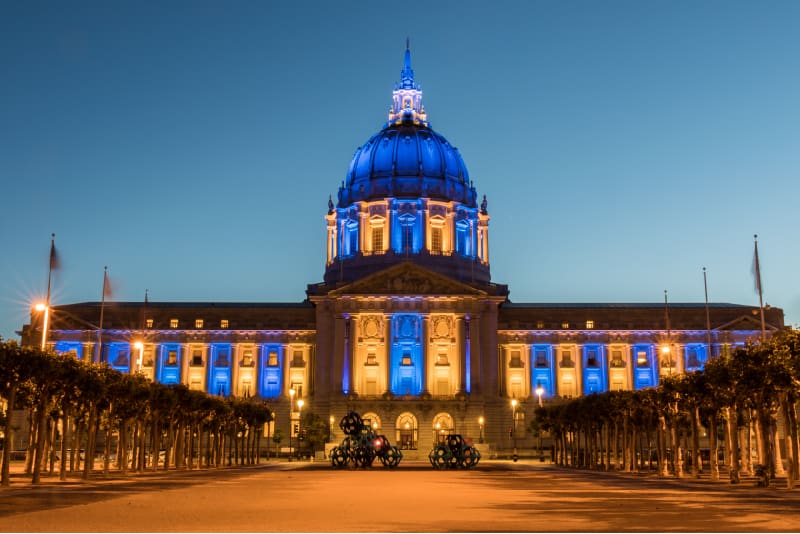
What is a Facade?
Facades, on their own, refer to the exterior side of a building, that is, the side facing the front. How a facade look is so important because, often, its concept determines the overall feel of the building, might affect how light transmits to the environment, and even the energy efficiency of that building.
Now that you know what facades are, you might figure out the transformative power of facade lighting designs, turning bland buildings into attention arresters. And if you don’t, I got you covered.
Experts have submitted that buildings with properly designed light concepts are distinct and can improve the overall feel of their immediate environment. They create an impression of class that attracts the high-enders.
Importance of Facade Lighting
Properly conceived facade lighting designs could highlight the main features of a building.
It can provide an artistic feel to the facades with shadows. Experts have stated that shadows are as important as lighting. Some leading lighting manufacturers say that while lighting illuminates the full features, silhouetting could provide entirely orgasmic or goosebumps effects for art lovers.
Facade lighting is waterproof and versatile. If you are trying to light up exteriors, the chances are that you would be searching for options that could continue working fine even when there is no shield from the elements. Facade lighting might be able to help. Beyond aesthetics and, of course, environmental security, facade lighting is waterproof.
Many big structures worldwide are now lit up with innovative ways to stand out from others. Facade lighting has become increasingly important in ensuring its visibility and security. Not only that, facade lighting has now assumed a more critical role in city planning and development. It provides nighttime as much as it provides daytime elegance.
Lighting design is a process and is one of the best ways to maximize space. Experts often advise that architects consider lighting concepts from the earliest design stage. Doing this would allow lighting to be optimized much later to enhance the perception of space, reinforce the activity within the space or highlight prominent areas.
You may already know that lighting design is more than determining the correct lux or intensity levels. It is also about the physiological visual demands and the emotional appeal to people. Hence, it is crucial to think long and hard before you choose or design your lighting scheme, especially if you are a newbie in the industry.
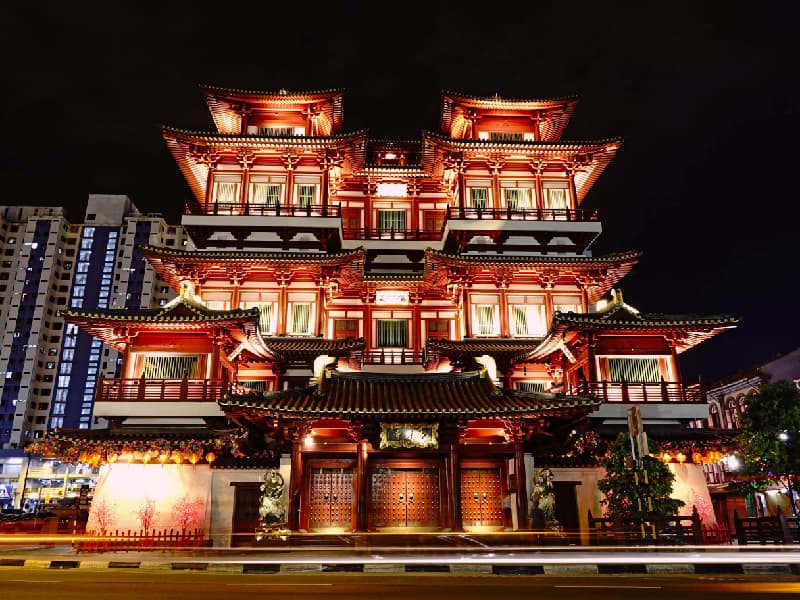
12 factors you should consider
To make this easy, I have put together in this article 12 factors you should consider before choosing a facade lighting design for your upcoming projects:
What do you want to light?
Sometimes, you do not even need to light up the whole facade. Lightening important spaces of the facade can be just enough. You only need to determine the major viewpoints of the facade by reviewing the areas of the structure with the least view blockage. You can determine this by observing nearby trees and buildings with maximum impact on viewers.
Your viewers can be people in a car waiting at a nearby traffic light, someone at the entrance or exit of another building, or even someone in a high-rise building. Design your lighting with such people in mind.
It also helps if there are water bodies around. Water bodies often boost the lighting effect because it has an inherent reflective ability.
How do you want to light it?
The starting point of any lighting project is determining the intent of the design. This will govern each design decision, like what mood you want to present, the people you want to appeal to, the style of lighting to choose from, and many more.
It is also imperative to consider the type of building you want to light. For example, a mall or plaza could have an extravagant lighting style, whereas a workstation or a bank could attain landmark status through a dynamic lighting style.
Always carefully check if the facade has a unique design, pattern, symmetry, rhythm, scale, contrast, mood, or balance, which you might want to highlight through lighting.
What kind of environment is it?
Environments for work and places that serve the public usually prioritize safety and good communication. Thus, in choosing a facade lighting concept, the functionalities of security and clarity should top your priority list.
On the other hand, environments designed for sales and exhibitions focus on the items and the user experience of viewing the products. Hence, you should choose a lighting concept to fit these functions.
Residence or tourism spaces are more personal. Therefore, you should consider facade lights that can create an ambiance of relaxation and comfort.
What are the functional requirements of the space?
A building can have more uses than those above. Using the space could determine the kind of facade lighting to accompany it. In thinking about functions, you should consider visual ease, glare, and task illumination. There are lighting requirements and recommended light levels for different tasks, which you can find in the CIBSE guide.
Some other important questions to provide answers to include:
- What activities will take place in the environment?
- How often will the activities take place?
- What time of the day will you be using the space?
- How important are these activities?
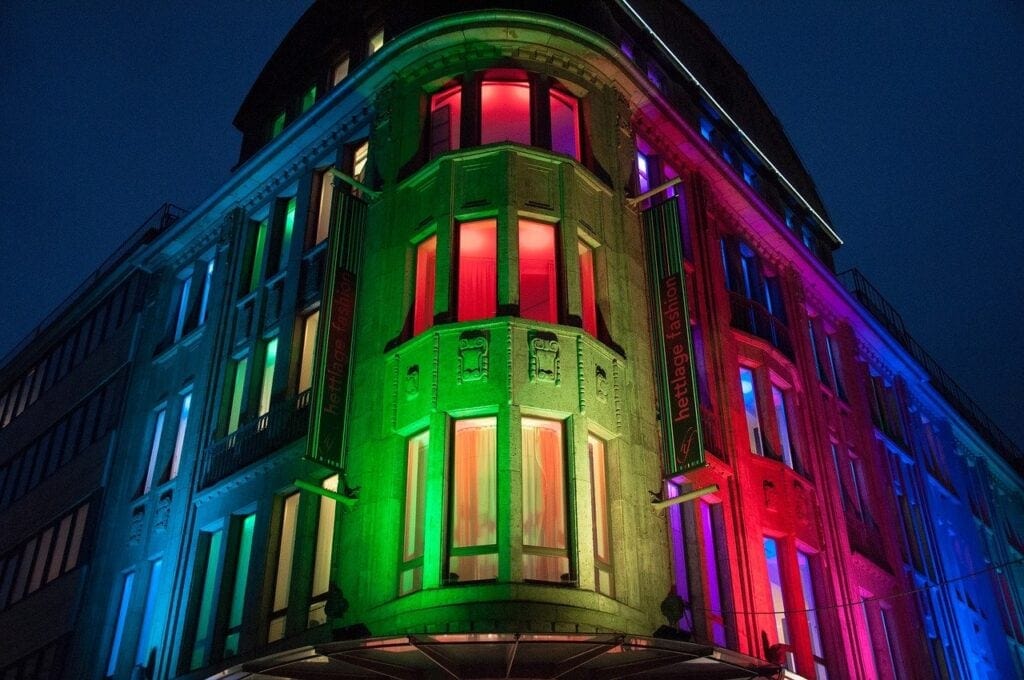
Behavioral effects on people.
Do you know that lighting can have meaningful effects on the health and behavior of people?
It can sufficiently improve and stabilize mood, helping people better focus and be aware. Psychologically, it can also decrease depression tendencies and better cognitive performance, like reaction time and activation. Therefore, it is essential to consider how your lighting design would affect the users.
The type of aesthetics required.
Lighting designs can alter how we perceive a space. No matter how excellent an architectural design is, the absolute masterpiece could look bland, uninspiring, and lifeless if you do not design its facade lighting properly. Similarly, proper lighting design concepts could make a monument from an ordinary building.
What impression do you want to make on people, inviting or atmospheric? The answer could be critical in your choice of design.
Budget
You can only do so much as your budget permits. Take a seat and count the cost before picking a design on the catalog, so you do not get halfway and discover that the projected finishing expenses have spiraled out of your control.
Look at your budget from the start and brainstorm creative solutions to help you achieve the same desired effect without breaking the bank.
How will you use light and shadows?
To create interest and atmosphere around your facade, you should also be skilled at creating depth and texture through expert light and shadows. Soft shadows could draw attention to the lit area as you can use them to highlight features of a focal point in a facade, perhaps an art on the wall, an ornament, or a city block.
You can also use light to give the impression that a facade is more prominent. One straight light in the middle of a facade could illuminate the center while darkening the rest of the wall. This would draw the attention away from the facade.
Suppose you want to make the facade appear larger. In that case, however, you might need to illuminate the walls with the brightest light, drawing the viewers’ attention to the surrounding walls while making the entire building visible.
What kind of light will you use?
You can choose to use direct or indirect light. If you use natural light, while it may be bright and directional, giving you control over the area you would like to illuminate, it can also cause a flash, leading to headaches and exhaustion. You can use anti-glare baffles to manage this, however.
Indirect light, however, reflects on a fitting surface, causing viewers to see a diffused light on a surface. Indirect light may create a relaxed atmosphere, as glare is absent. Hence, it reduces strain on the eye.
You should know that using only indirect light on facades could create a bland and dull space. I would advise that you try out a combination of light and shadow for the best effects.
What color of light do you want to use?
There are cold and warm colors. Cold colors usually have more blue, whereas warm colors have more yellow.
These color types have environments and purposes for which they are best suited. You should pay attention to this before choosing a design concept. You can use cold lighting to create a natural daytime effect around open workstations or parks. You should use it at high lighting levels.
On the other hand, warm lighting is the best fit for residences. It looks a lot better at low levels of light, however.
Task lighting
Task lighting refers to providing light for specific tasks done around a facade. Some spaces will require different light because of the functions done around them. For example, a busy club avenue will require doused color lighting to align with the atmospheric conditions. It is often best to consider your task lighting requirements before choosing a design.
How will you control the light?
Given the advancements in technology today, you can now have more light control than ever before. How and where will you control the lights, and how will this affect the user experience? While choosing to light, design concepts should also be at the back of your mind.
I have also explained a few concepts of facade lighting design below. They include:
• Solid facade
A solid facade is a smooth wall surface with no texture, often influenced by natural light sources, such as sunlight. However, how big your facade is can determine the pattern and structure of light.
• Vertically divided facade
You can also use narrow beams of light to strengthen vertical division, especially by combining downlights and up-lights.
• Horizontally divided facade
Horizontal divisions usually cast heavy and long shadows on a building’s facade. You can reduce this, though, by increasing the offset of the luminaire.
• Perforated facade
This concept is based on creativity that allows multiple lighting techniques. Lighting up your facades professionally could give beautiful effects, improving the looks of a building day or night.

Other Tips to Remember During Facade Lighting Design.
- The height of the building
- The width of the building
- The position of the light source
- The facade material
- The peripheral light in immediate contexts
- Strive to avoid light pollution
Some Lighting Techniques You Can Use
Grazing
For this, you can locate a light source close to the facade. Ensure to allow for the concentration of illumination at the base, such that the illumination reduces as it goes up the building.
Direct View
Here, you place light fixtures on the facades. It is best used for glazed facades.
Accentuating
You can also place light fixtures close to create dramatic effects. This is mainly for columns, openings, and the like.
Washing
Here, you place the light fixtures a little distance from the facade to provide a uniform wash on the facade. It is best used for specular finished and flat facades.
Flooding
You can locate light fixtures far away from the facade to provide uniform illumination. This is why it is called floodlighting.
Conclusion
What is most important in facade lighting design is ensuring that architects and designers think about it from the early stage. This way, you can have a well-balanced building. Of course, numerous factors to consider while developing a lighting design concept are multiple. However, the chief among them is to give credence to the end-users and the project’s overall purpose.
Have I missed out on anything? Have your say in the comments section.
